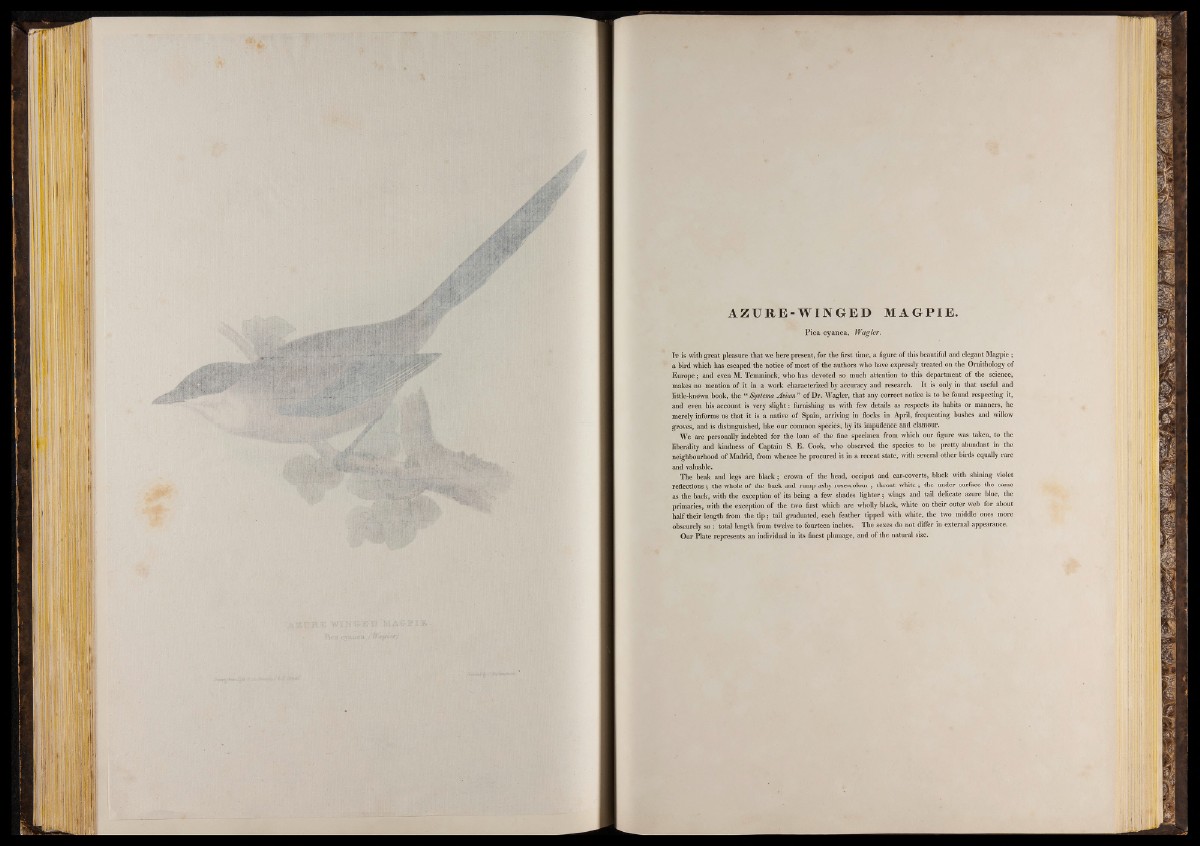
A Z U R E -W I N G E D MAGP IE.
P ica cyanea, Wagler.
It is with great pleasure that we here present, for the first time, a figure of this beautiful and elegant Magpie ;
a bird which has escaped the notice of most of the authors who have expressly treated on the Ornithology of
Europe; and even M. Temminck, who has devoted so much attention to this department of the science,
makes no mention of it in a work characterized by accuracy and research. It is only in that useful and
little-knOwn book, the “ Systema Avium” o f Dr. Wagler, that any correct notice is to be found respecting it,
and even his account is very slight: furnishing us with few details as respects its habits or manners, he
merely informs us that it is a native of Spain, arriving in flocks in April, frequenting bushes and willow
groves, and is distinguished, like our common species, by its impudence and clamour.
We are personally indebted for the loan of the fine specimen from which our figure was taken, to the
liberality and kindness o f Captain S. E. Cook, who observed the species to be pretty abundant in the
neighbourhood of Madrid, from whence he procured it in a recent state, with several other birds equally rare
and valuable.
The beak and legs are black; crown of the head, occiput and ear-coverts, black with shining violet
reflections ; the whole o f the back and rump ashy rose-colour; throat white ; the under surface the same
as the back, with the exception o f its being a few shades lighter; wings and tail delicate azure blue, the
primaries, with the exception of the two first which are wholly black, white on their outer web for about
half their length from the tip; tail graduated, each feather tipped with white, the two middle ones more
obscurely so : total length from twelve to fourteen inches. The sexes do not differ in external appearance.
Our Plate represents an individual in its finest plumage, and of the natural size.
il I I